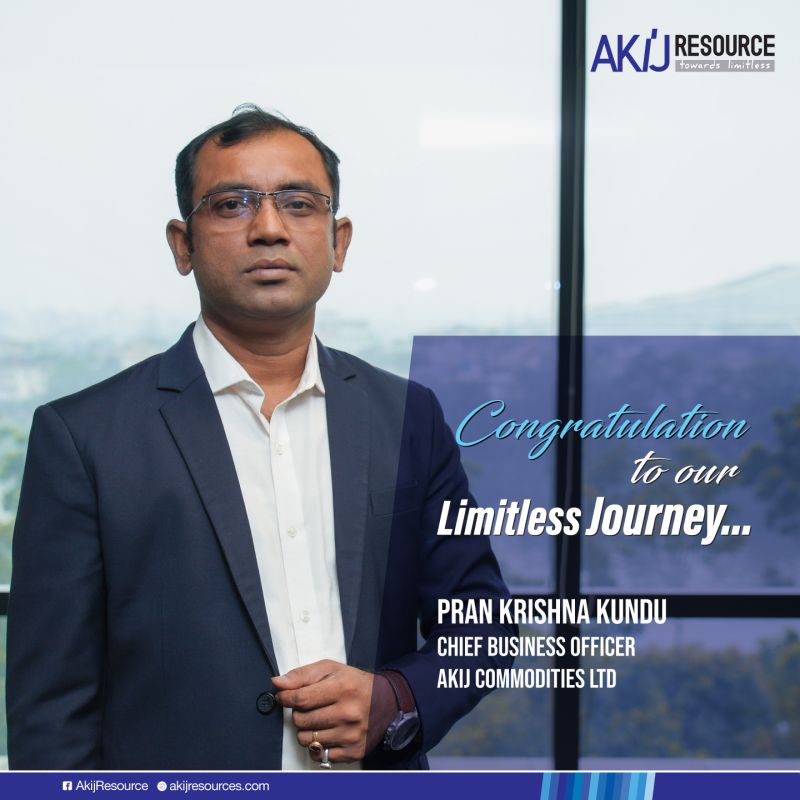Latest research on TMT rebar highlights increased seismic resistance and improved corrosion durability. Innovations focus on enhancing strength-to-weight ratios and weldability.
The construction industry constantly seeks advancements in materials to improve safety, longevity, and cost-efficiency. TMT rebar, or Thermo Mechanically Treated rebar, stands at the forefront of this quest. Recent studies have delved into the microstructural properties that confer TMT rebar with superior ductility and tensile strength.
These qualities are critical for structures in earthquake-prone zones, where flexible yet strong materials can save lives. Researchers are also exploring new alloys and treatment processes to extend the lifespan of TMT rebar in corrosive environments like coastal areas. This not only ensures structural integrity over time but also reduces maintenance costs. The insights from the latest research are poised to revolutionize the use of TMT rebar in modern engineering projects, making it a topic of keen interest for industry professionals.

Credit: www.facebook.com
Introduction To Tmt Rebar Technology
Introduction to TMT Rebar Technology dives into the cutting-edge advancements in construction materials. This section sheds light on how TMT Rebar is revolutionizing building structures worldwide. Let’s explore the basics and its significance.
The Basics Of Tmt Rebar
TMT Rebar, or Thermo-Mechanically Treated Rebar, is a key player in construction. Its unique process makes it stronger and more durable. This rebar is not just metal. It’s a construction superhero.
- Heating: The steel gets hot but stays strong.
- Rolling: Machines shape the hot steel into bars.
- Cooling: Water cools the bars quickly. This makes them tough.
This process gives TMT Rebar its power. It can fight cracks and bends better than old rebars.
Significance In Modern Construction
TMT Rebar is more than just steel. It’s the backbone of modern buildings. It makes structures safe, strong, and long-lasting. Here’s why it’s important:
- Strength: It can hold heavy weights.
- Durability: It lasts long, even in bad weather.
- Flexibility: It bends without breaking. This is good for earthquakes.
These features make TMT Rebar a favorite for builders and engineers.
Advancements In Tmt Rebar Production
The construction industry often seeks stronger, more durable materials. TMT rebar is a star in this sector. Recent advances have revolutionized TMT rebar production. Let’s explore these innovations.
Innovative Manufacturing Techniques
Factories are now embracing new ways to create TMT rebar. These methods enhance strength and flexibility. They cut costs too.
- Automated control systems ensure consistent quality.
- Thermo-mechanical treatment now uses precise temperatures.
- Advanced cooling systems improve the microstructure.
Sustainability In Production
Green practices are vital in today’s world. TMT rebar production is getting cleaner and more eco-friendly. Waste is down, and recycling is up.
| Aspect | Impact |
|---|---|
| Energy-efficient furnaces | Reduce carbon footprint |
| Scrap metal recycling | Conserves resources |
| Waste water treatment | Protects ecosystems |
Enhanced Material Properties
The construction world is evolving with TMT Rebar technology. Material properties of rebars define their performance. Recent studies have led to some exciting developments. These advancements focus on making rebars stronger and more durable.
Improved Strength And Flexibility
Builders seek rebars that can support heavy loads. At the same time, they must bend without breaking. New TMT Rebar technology offers this balance.
- Higher yield strength supports larger structures.
- Flexibility allows for creative architectural designs.
Research shows TMT Rebars with enhanced grain structure achieve these goals. They outperform traditional rebars significantly.
Corrosion Resistance Breakthroughs
Corrosion is a rebar’s enemy. It weakens structures over time. Scientists have developed new TMT Rebars that fight corrosion.
- Advanced alloys form a protective layer on the rebar.
- This layer shields the steel from harsh elements.
These rebars last longer, even in coastal or industrial environments. They promise safer buildings for more years.
Impact On Durability And Longevity
The Impact on Durability and Longevity is a critical aspect of modern construction. TMT Rebar, or Thermo Mechanically Treated Rebar, stands at the forefront of innovative building materials. This type of rebar has transformed how structures resist environmental challenges. Let’s delve into the specifics of how TMT Rebar contributes to the extended lifespan of structures and observe its real-world applications through case studies.
Extended Lifespan Of Structures
TMT Rebar’s unique features significantly enhance a structure’s lifespan. The rebar’s corrosion resistance ensures that the backbone of the construction remains intact for decades. This leads to fewer maintenance needs and lower costs over time.
- High tensile strength: Allows buildings to withstand more stress.
- Resistance to fatigue: Prevents cracks from forming under cyclic loads.
- Superior bendability: Facilitates the design of safer, more intricate structures.
Case Studies: Tmt Rebar In Action
Real-world applications show TMT Rebar’s effectiveness. Here are two case studies that illustrate its impact:
| Project | Location | Outcome |
|---|---|---|
| Coastal Bridge | Florida, USA | Withstood harsh saline conditions; no structural damage after 10 years. |
| High-rise Building | Tokyo, Japan | Survived multiple earthquakes; minimal repairs needed. |
These cases prove TMT Rebar’s role in creating long-lasting structures. The Coastal Bridge in Florida remains unaffected by the corrosive saltwater environment. The High-rise Building in Tokyo showcases TMT Rebar’s earthquake resistance.
Economic Implications
Exploring the economic implications of the latest research on TMT rebar reveals its potential impact on the construction industry. Understanding the cost-effectiveness and market dynamics is key to foreseeing its adoption rate.
Cost-benefit Analysis
TMT rebar, with its high durability and strength, offers long-term savings. A detailed cost-benefit analysis helps us weigh these advantages against initial investment.
| Cost Factors | Benefits |
|---|---|
| Material expenses | Reduced maintenance |
| Labor costs | Longevity |
| Installation charges | Energy efficiency |
Builders and developers might see higher upfront costs. But TMT rebar promises lower lifetime expenses.
Market Trends And Predictions
The TMT rebar market reflects an upward trend. Data shows a growing preference for sustainable materials.
- Demand increases in regions with severe weather.
- Construction booms in Asia-Pacific drive market growth.
- Green building initiatives boost TMT rebar adoption.
Predictions indicate a steady rise in global TMT rebar demand. This will likely continue as infrastructure development surges.

Credit: www.researchgate.net
Environmental Considerations
The environment plays a big part in TMT Rebar research. Companies now focus on making TMT Rebar in ways that don’t hurt our planet. Let’s dive into how they do it.
Eco-friendly Production Processes
Factories are changing how they make TMT Rebar. They want to keep the air and water clean. Here are some steps they take:
- Less water use: New methods need less water. This saves our rivers and lakes.
- Lower emissions: Factories use cleaner energy. This means less smoke in the air.
- Solar power: Some plants now use sun energy. It’s clean and never runs out.
Recycling And Reusability
TMT Rebar can be used again. This is great for our planet. Here’s why:
- Less waste: Old TMT Rebar doesn’t need to be thrown away. It can be melted and made new.
- Saves resources: Using old TMT Rebar means we need less iron ore. This protects our earth.
- Energy efficient: Making new TMT Rebar from old ones uses less energy. This helps fight climate change.
Regulatory And Standards Evolution
The construction industry is witnessing a significant evolution in regulatory frameworks and standards. This shift ensures that TMT rebar products meet the highest safety and quality benchmarks. Let’s dive into the details of how international standards and local regulations are adapting to these changes.
International Standards Compliance
Global benchmarks set the bar for TMT rebar quality and safety. Manufacturers must align with these stringent standards to compete in international markets. Common international standards include ISO, ASTM, and BSI. Compliance ensures consistent quality and performance across borders.
- ISO 6935-2: Specifies technical requirements for ribbed bars.
- ASTM A615: Covers deformed and plain carbon-steel bars.
- BS 4449: Defines characteristics for carbon steel bars.
Local Regulations And Adaptations
Local regulations may vary to address specific environmental conditions and construction practices. Authorities tailor standards to ensure TMT rebar meets regional demands. This adaptation is crucial for safety and longevity of structures in diverse settings.
| Country | Standard | Focus Area |
|---|---|---|
| India | IS 1786 | High strength and ductility |
| USA | ASTM A706 | Weldability |
| UK | BS 4449 | Yield strength |
Adherence to local standards ensures TMT rebar withstands specific regional challenges. It also facilitates compliance with building codes, enhancing safety.
Future Of Tmt Rebar Technology
The construction industry constantly evolves. TMT rebar technology is no exception. As buildings reach new heights, the demand for stronger, more adaptable reinforcement like TMT rebars grows. We are on the brink of a new era with upcoming innovations in this field.
Potential Innovations On The Horizon
Scientists and engineers are hard at work. They aim to revolutionize the way we use TMT rebars. Here are some expected changes:
- Enhanced strength to support mega-structures.
- Improved corrosion resistance for longer life.
- Smart rebars with embedded sensors to monitor health.
- Greener manufacturing processes for a sustainable future.
Challenges And Opportunities Ahead
With innovation, obstacles arise. The industry faces several challenges:
- Integrating new tech with existing systems.
- Ensuring cost-effectiveness for widespread adoption.
- Training workforce on advanced materials and techniques.
These challenges open doors to opportunities. Companies that adapt quickly will lead the market. The push for eco-friendly options will benefit the planet.

Credit: twitter.com
Frequently Asked Questions
Which Is The Best Tmt Rebar?
The best TMT rebar depends on your project requirements, with brands like TATA Tiscon and JSW Steel being top choices for their quality and reliability.
What Is The Difference Between Tmt Bars And Tmt Rebars?
TMT bars and TMT rebars refer to the same product, with “rebar” standing for reinforcing bar. Both terms describe high-strength steel bars used in construction to reinforce concrete structures. There’s no difference between them; it’s simply a matter of terminology preference.
How Can You Tell Good Quality Tmt Bars?
Check for ISI marks and manufacturer details to ensure TMT bar quality. Examine the bar’s surface for even ribs and lugs. Test the bar’s flexibility; good quality TMT bars bend without cracks. Verify grade and size consistency. Lastly, assess the bar’s rust resistance.
What Is The Life Of A Tmt Bar?
The lifespan of a TMT bar typically ranges from 40 to 50 years, depending on usage and environmental conditions. Regular maintenance can extend its durability.
Conclusion
Understanding the advancements in TMT rebar technology is crucial for anyone involved in construction or engineering. This latest research sheds light on significant improvements, offering stronger, more durable solutions for building projects. Keeping abreast of these developments ensures we’re using the best materials available, paving the way for safer, longer-lasting structures.
Let’s embrace these innovations for a more robust future.







